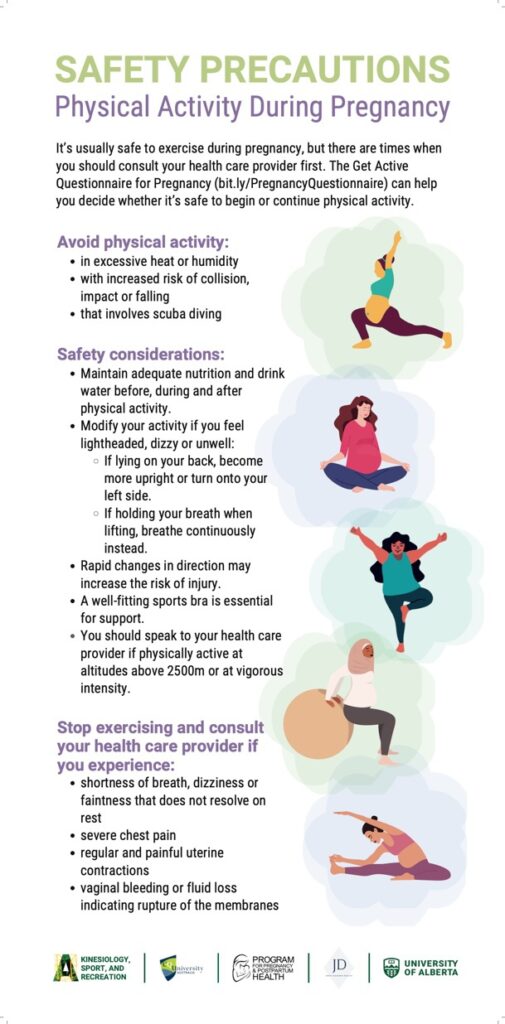When Mrs. Lee, an avid cycler and CrossFit enthusiast, became pregnant with her first child, the joy she felt often was overshadowed by fear.
She had heard conflicting information about exercising during pregnancy and didn’t want to do anything that could harm her baby. So, she decided to avoid exercise altogether. Despite trying to act in her child’s best interests, she was unaware that this decision would unintentionally increase her risk of health issues and newborn complications.
The absence of physical activity during pregnancy poses a laundry list of significant risks, including an increased likelihood of gestational diabetes, preeclampsia, gestational hypertension, prenatal depression, urinary incontinence, caesarean section, instrumental delivery, excessive gestational weight gain and having a baby large for their gestational age.
Meeting the recommended guidelines for physical activity during pregnancy – engaging in 150 minutes of moderate-intensity exercise per week – significantly reduces the risk of these health issues. Unfortunately, only 15 per cent of pregnant individuals meet these guidelines, posing a notable concern for expectant moms and their babies.
This trend is particularly problematic amidst the current strain on our health-care system, in which 20 per cent of Canadians are without a family doctor, and waitlists for the emergency department and walk-in clinics are getting increasingly longer, limiting access to care for many.
A limited understanding of what constitutes safe prenatal exercise among expectant mothers contributes to the low percentage of individuals meeting these exercise guidelines. Additionally, many health-care professionals do not routinely advise their pregnant patients on the subject, despite a wealth of research supporting the positive impact of exercise on maternal and fetal health. Some health-care professionals may feel they lack information on safe prenatal exercise or are unfamiliar with available guidelines. Among providers that are familiar with the guidelines, many have difficulty implementing their knowledge effectively when working with patients.
To bridge this knowledge gap and foster safe participation in prenatal physical activity, the use of patient handouts is an invaluable tool.
“There’s a need for a quick, concise, evidence-based tool to support our patients,” says Alysha Nensi, an Obstetrician and Gynecologist at St Michael’s Hospital in Toronto. By providing clear and concise information, these handouts can empower patients to access the knowledge they need to engage in exercise safely and with confidence.
One such resource (see figure below), Safety Precautions for Physical Activity during Pregnancy, has been developed in conjunction with the University of Alberta and the University of Australia. The resource serves as a knowledge translation tool for pregnant individuals and clinicians, and it includes information on physical activity that should be avoided, safety considerations, and signs when you should stop physical activity during pregnancy.
Through thoughtful health promotion, such as the dissemination of evidence-based patient handouts, health-care professionals play a vital role in promoting safe participation in physical activity during pregnancy. Ultimately, this has the potential to improve both maternal and fetal health outcomes, while also easing the burden on our health-care system through a decreased risk for medical care and intervention.
During her second pregnancy, Mrs. Lee was introduced to the Safety Precautions patient handout. Equipped with this newfound understanding of prenatal exercise, she was able to engage in physical activity safely and with confidence during her second pregnancy. By participating in evidence-based prenatal physical activity, she increased the likelihood of positive health outcomes for herself and her baby.



The comments section is closed.
physical safety precautions are excellent for women during their pregnancy ~ Divyanshu